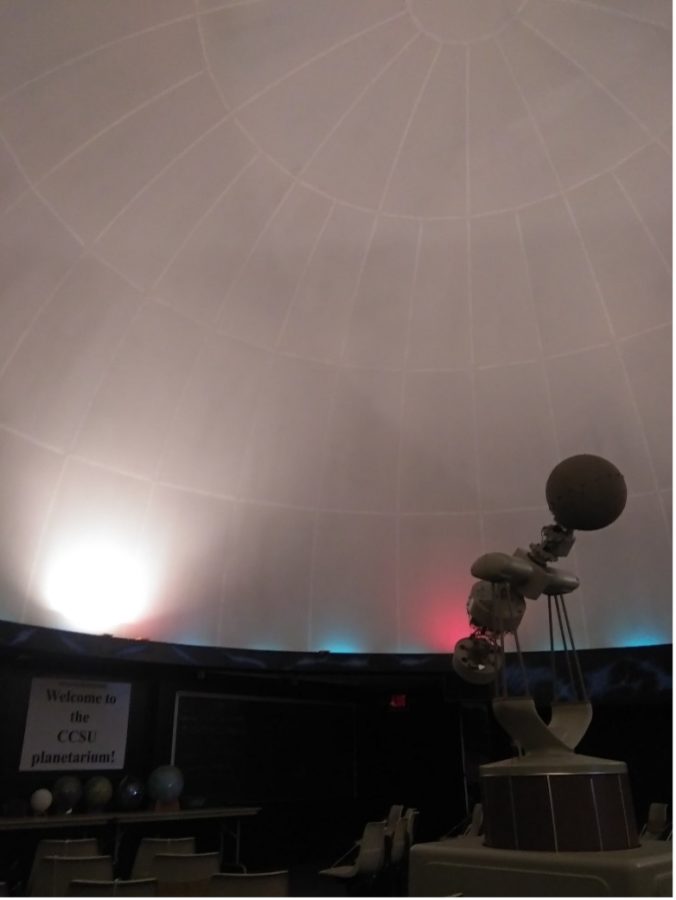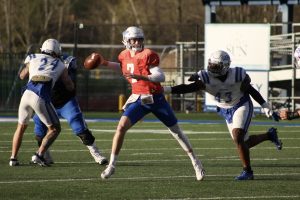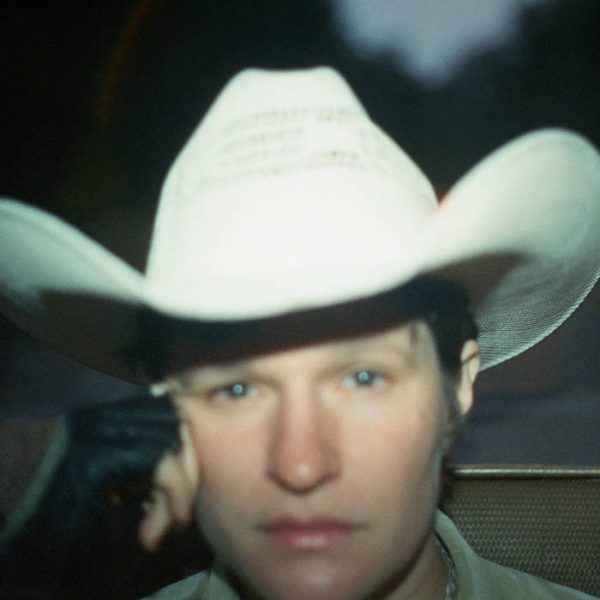Planetarium Event Review
Inside of planetarium before show. Photo via Jayden Klaus
April 6, 2022
A planetarium show was given to students and faculty at CCSU’s Nicholas Copernicus Hall on stars and gravity.
The show Resistance is futile: Gravity is everywhere was given by Carol Ivers, the Planetarium Director, in Copernicus Hall’s Geological Sciences section. The show was open to anyone who wanted to come and learn about space and gravity.
The show began with a projection of the night sky onto the planetarium’s ceiling with all the stars mapped out. Ivers talked about how the stars visible in the sky change with the changing of the seasons as the Earth rotates on its axis and orbits the sun.
She then went on to pull up a depiction of the sun’s ecliptic, or path that it travels in the sky, and the angle at which the sun reaches noon is determined by what season it is, with summer having higher and winter lower.
Ivers pointed out several stars and the constellations that they form. One of which was Orion, easy to recognize by the three stars in a line that included his belt. She discussed how one of the well-known stars in Orion, Betelgeuse, is particularly notable because it is a red giant that will explode. It may do so in the current generation’s lifetime and will be visible during the day if it happens.
Another constellation that Ivers focused on was the Big Dipper. She explained how the Dipper itself is not a constellation itself but part of Ursa Major, but what we know as the Big Dipper is just the most visible part of it. She then used Ursa Major to point out Ursa Minor and its most famous star, the North Star.
Ivers said that while the North Star never moves in the night sky, demonstrating this by showing the positions of other stars moving and their remaining; still, it has shifted over the years. Due to Earth being on a tilted axis, it goes in place every couple of thousand years, so the North Star’s position is not a permanent thing like we think it is.
Ivers then moved on to a presentation on gravity, how it affects everything around us and how it operates. She began with Newton’s discovery of the concept and Einstein’s theory of relativity, where massive bodies distort space around them due to their gravity. An object’s gravity causes other entities to go into orbits.
During the presentation, Ivers talked about how while moons orbit planets, the planets themselves will revolve around their gravitational center. Even our sun revolves around a center that has changed location over the decades as the planets orbit around it.
Gravity is the driving force of a black hole resulting from a dead star. Ivers talked about what black holes look like and how powerful they are, with gravitational strength that even light cannot escape. She then showed NASA’s Guide to Black Hole Safety video, which detailed how black holes operate and how dangerous they are.
The last segment of the presentation was on galaxies. Ivers explained how galaxies come into existence and how they can interact. Galaxies often form clumps close by to each other, and if they get too close,
their gravities can attract one to the other, and they will combine. It’s believed that the Milky Way Galaxy and Andromeda Galaxy will have this fate in a few million years and form the Milkomeda Galaxy.
Overall, the planetarium show was a delightful event to participate in, and it was exciting to see what space is like and how it operates beyond our planet.














